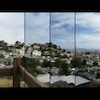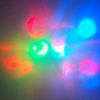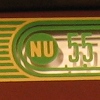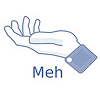A friend sent me a link to today’s xkcd, which inspired me to post about a project I’ve been working on off and on over the last year or so. The comic describes the use of 2 cameras placed at a great distance apart, which are then viewed through via a pair of improvised video goggles. The result is a greatly exaggerated sense of stereoscopic depth. It’s as if you are a giant, with eyes a hundred feet apart, looking at tiny little clouds.
My project uses the same idea, but instead of using live video cameras, I use a pair of digital still cameras set far apart to create hyper-stereocopic time-lapse movies (geeky details below). I shot a bunch of these around San Francisco. They’re viewable on youtube:
This one looks good in side-by-side mode but is a bit dark with the red/cyan glasses:
If you’re a normal person and therefore don’t have a pair of red/cyan 3D glasses at arm’s reach, I apologize. Youtube has some info for viewing 3D videos. If it look a bit squished, click the 3D icon and select full-width. It looks best at 720p or 1080p.
The movies above were first shown at the 2011 Television of Tomorrow conference.
The geeky details:
The “hyper” refers to the usually large distance between the two cameras. To replicate a “normal” sense of depth perception, one would place the 2 cameras at the same distance apart as human eyes (about 2 1/2 inches). This gives a sense of depth for 10 feet or so; after that, things start to flatten out. Every time you double that binocular distance, you double the distance to which one’s stereoscopic sense extends. So if the camera “eyes” are 100 feet apart, objects up to a mile a way will have an uncanny sense of depth. Distant objects like clouds that normally look flat to us, suddenly “pop out”—you get a real sense of their contours, and almost feel like you can reach around them.
I shot these using pairs of Canon powershot cameras. In some cases they were tethered to a single computer, and were controlled by the gphoto program. I then figured out a way to use CHDK to get untethered cameras to shoot in sync, so that they could be placed at much greater distances.









Pingback: A History of the Sky « Burrito Justice